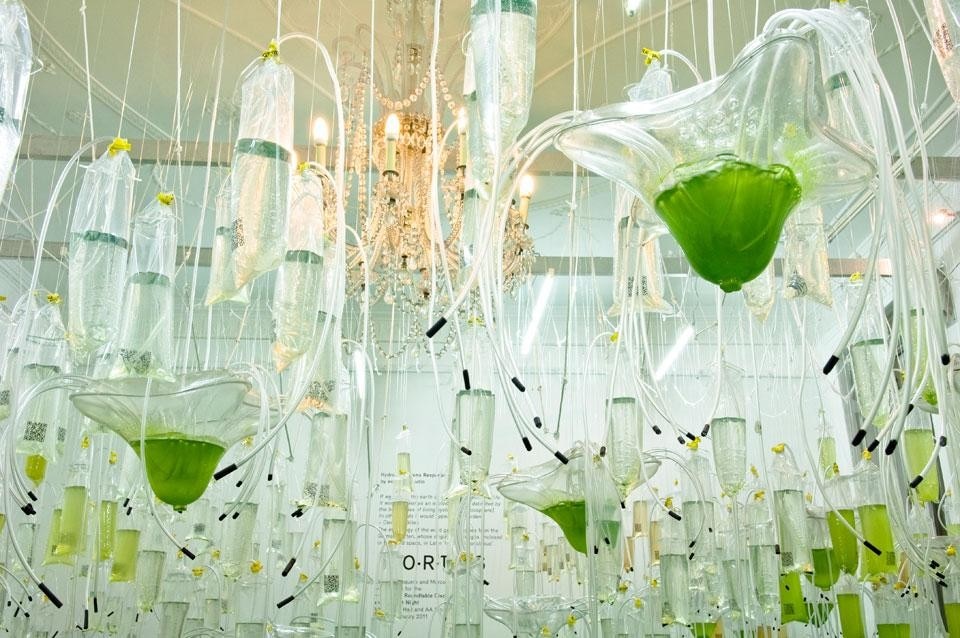Above a sea of green carpet rolled in places into seating, 325 transparent bags - photobioreactors containing nine different types of algae ranging from mint green to delicate pink, to more murky brown - hang from a catenary structure of acrylic rope. Each one has a long clear plastic tube EcoLogic encourages you to blow on, assisting the oxygenation and growth of the algae nurtured by your carbon dioxide. Each photobioreactor has a QR code – the square one mainly used in smart phone-enabled retail, on its side. By scanning the code, visitors with a smart phone can access on their phone a page of information about the algae they fostered. They can also send a Tweet about their action. A screen in the exhibition shows a dynamic 3dscape – a virtual garden – which reacts to the amount of interaction by visitors with the algae. In the H.O.R.T.U.S. world (Hydro Organism Responsive to Urban Stimuli), biology becomes architectural, and architecture becomes biology, in a generative, open source of knowledge exchange.
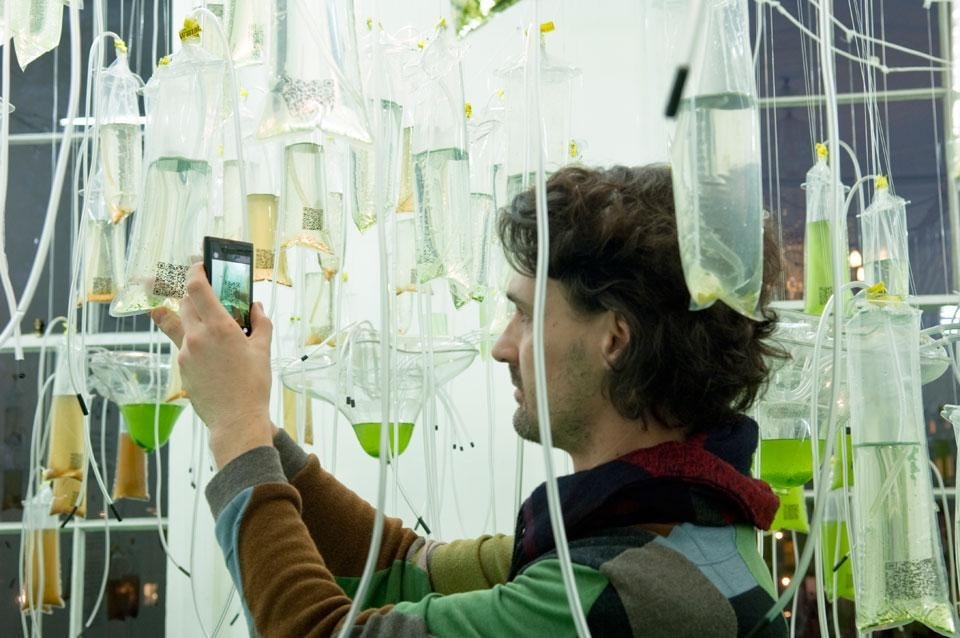
"You become a cyber gardener", she explains, with the hands-on nature of the project encouraging many forms of self-organisation. The 3dscape (on a screen on a metal "stalk") shows accumulated portraits of the gardeners, as, one by one, they tweet and thereby become part of the changing landscape. Before, interactive installations involved loads of sensors, but H.O.R.T.U.S. is more easy to play with - an open source means of playing with information. "The project makes you think about farming and gardening, but there is another level where knowledge can be disseminated and exchanged, and it's a virtual cultivation of knowledge. Media technologies and material systems come together."
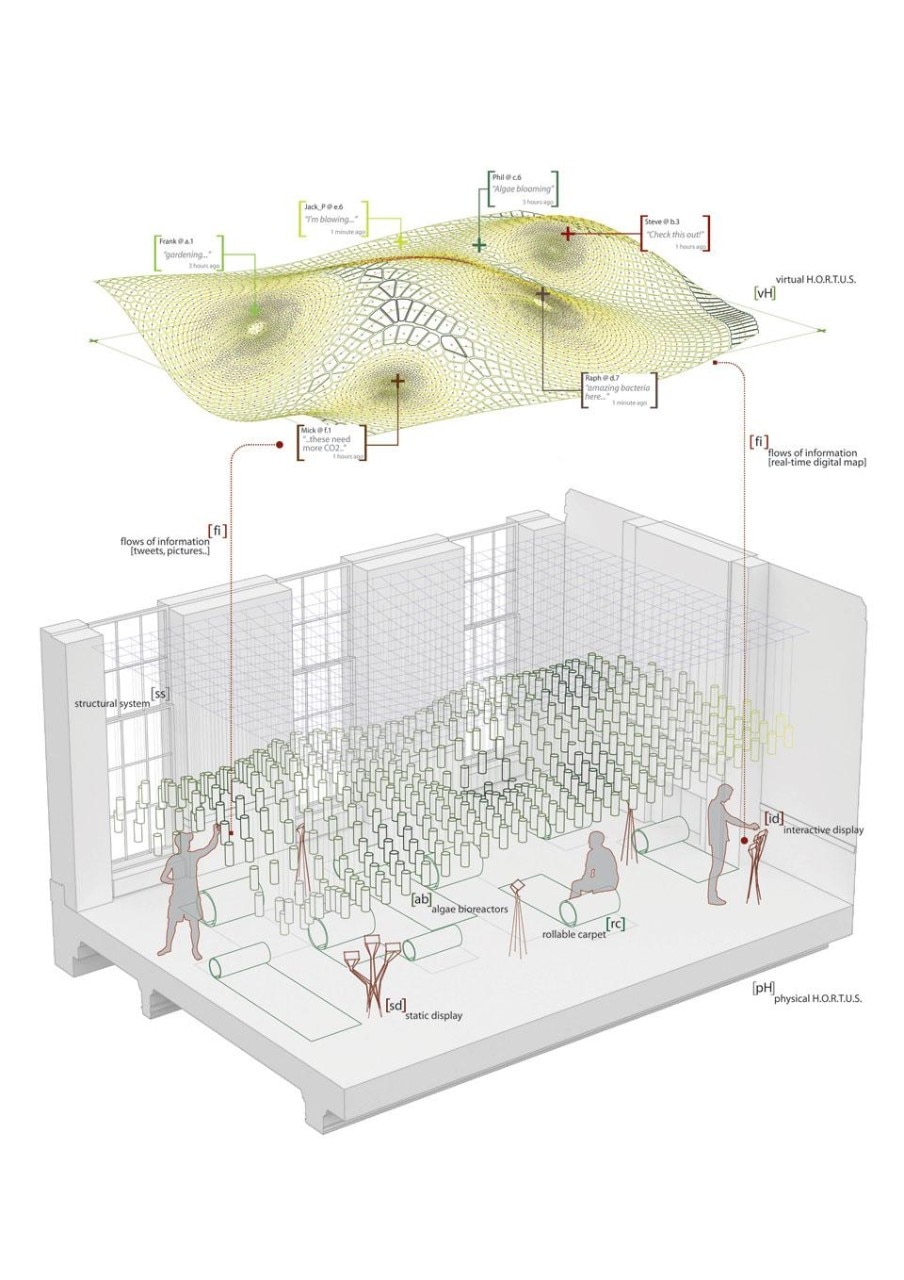
"They (EcoLogic Studio) are researching the future", said Tommaso Principi, architect and Partner in Open Building Research, the Genoa-based practice which has now expanded to London. "It's a very good synthesis between continuity and conscience, good design and interaction", he felt. "This approach is something between an art installation and architecture". Could it be part of future architecture? Yes, as "a prototype of a new interface between inside and outside. There are no other Italian architects who work in quite this way".
Algae are micro-organisms, ubiquitous in nature, and algae farming for food, as alternative fuel and other uses, is a booming industry. At the exhibition opening the "garden" was full of people of all ages relaxing by it or under it and moving through it
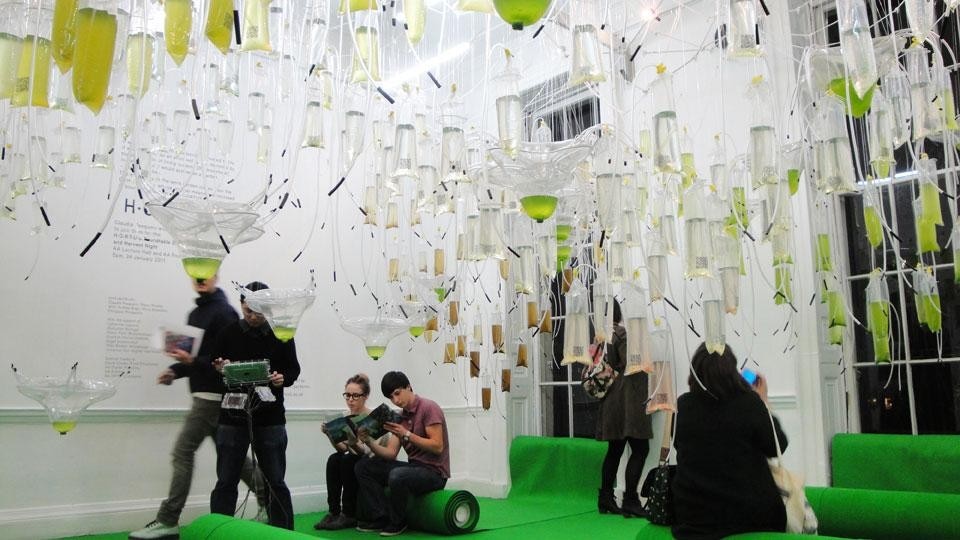
For Enrico Dini, architect, Chairman of D-Shape based in London, consultants of a new robotic building system, H.O.R.T.U.S, was a shock to his system: "my first sensation was that I felt inadequate. It's very futuristic, but now the future is becoming normal. It's a bit disquieting, because it's food, design, a shape. I have a few friends teaching on the subject of biology and genetics applied to architecture – these topics used to be so far away from it. If you want to be a good architect you must now understand genetics, algorithms, CNC processes, mechatronics. Now I see algae – biology – is nearly into the field of architecture, the mother of generating things. Maybe someone will see this as profitable." Lucy Bullivant
H.O.R.T.U.S
Hydro. Organisms. Responsive. To. Urban. Stimuli
Architectural Association
14.01.2012 - 11.02.2012
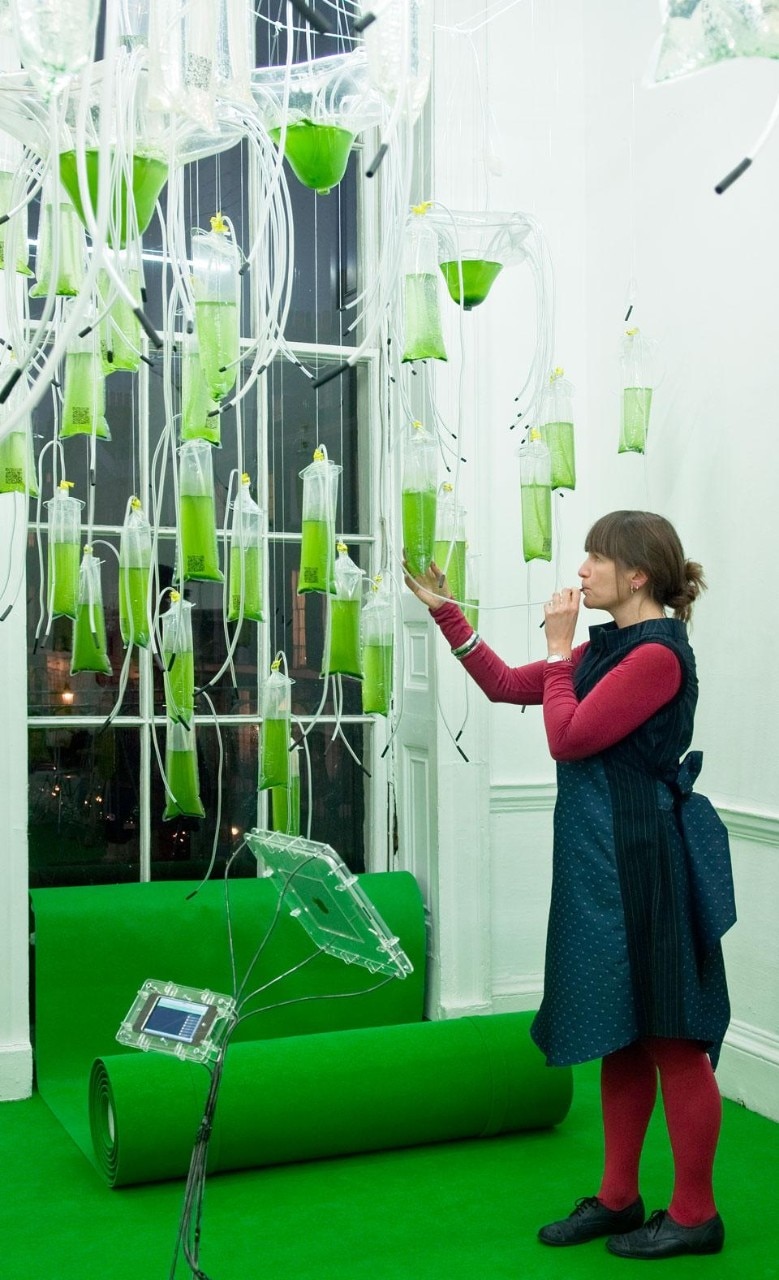
With the support of: Catherine Legrand [Evolution Biology], Scottish Marine Institute [Algal Biodiversity], Simon Park [Bioluminescence], Mats Brodén [Knowledge sharing], Immanuel Koh [digital interfaces]
Special thanks to: David Crooks [Fluid Structures], AA digital platforms, AA exhibition, AA prototyping LAB, AA INTER10 students


